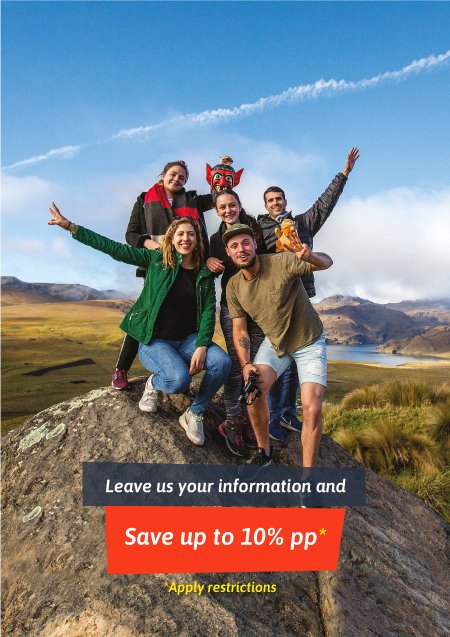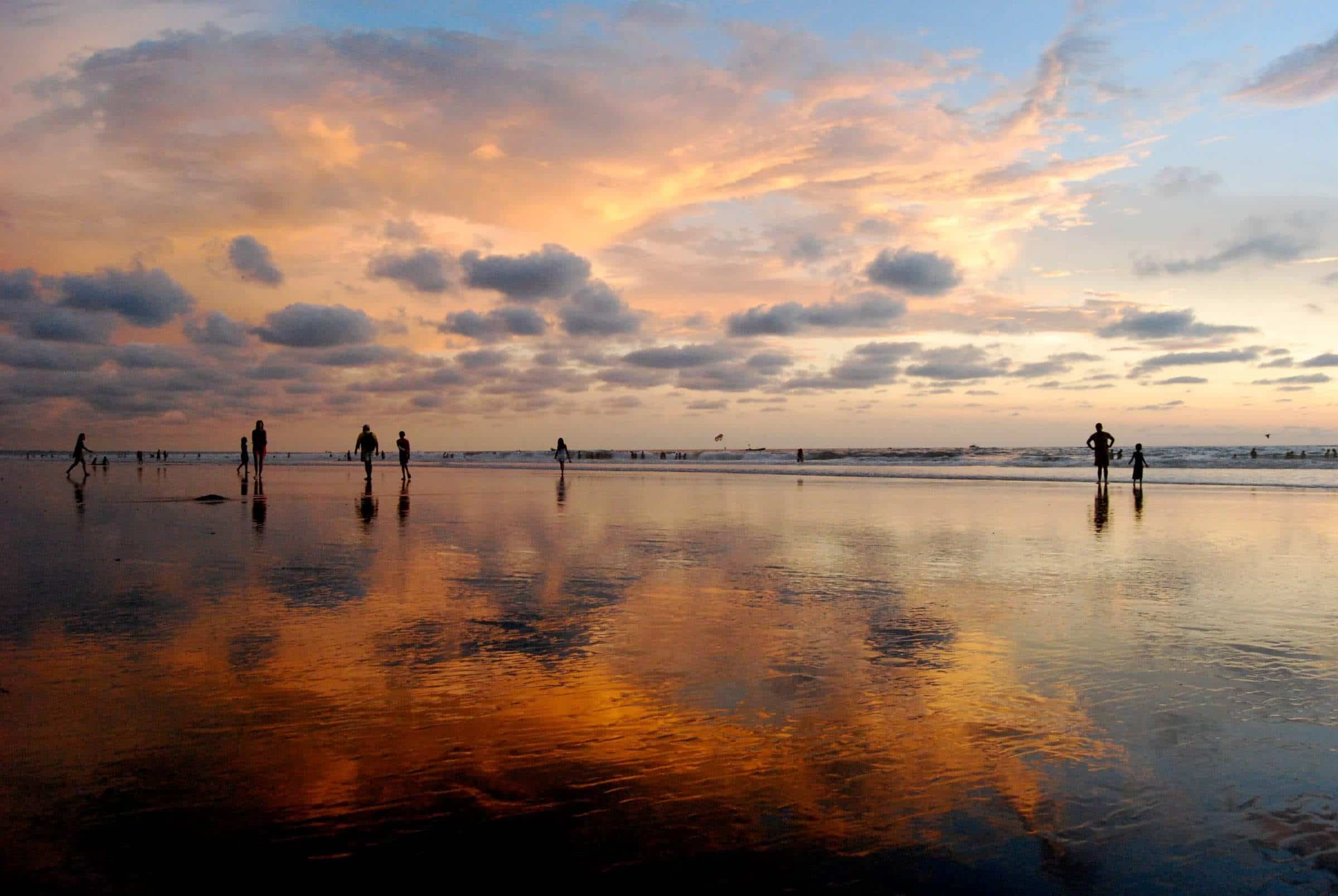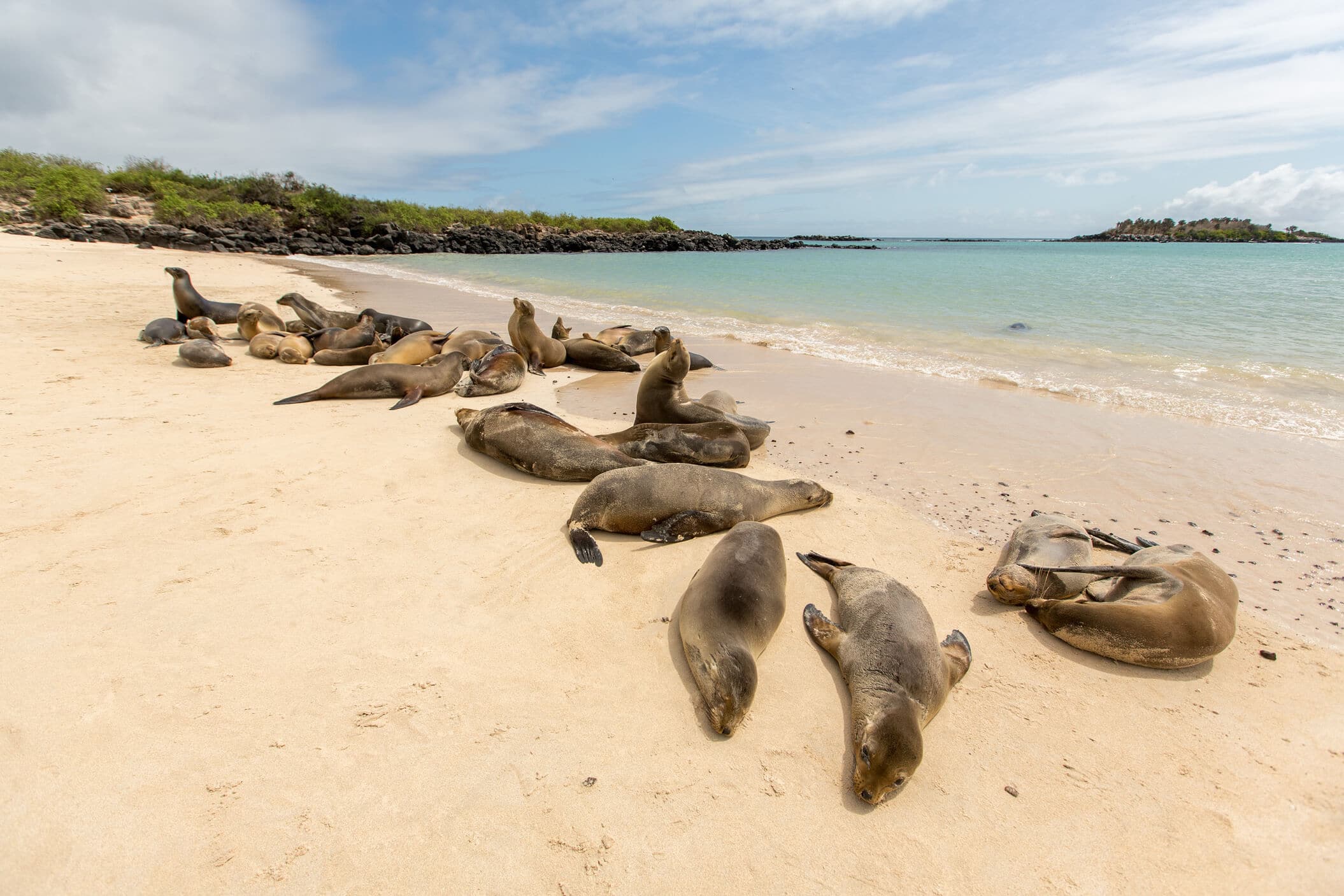If you, like many travelers, have set your sights on South America for your next adventure, no doubt you are already looking forward to your Ecuador travel!
Ecuadorians proudly describe their country as “four worlds in one” (in reference to its four climate regions). So, how can you plan for this epic trip? Here are some ideas about what to expect from your journey.
How to get prepared for Ecuador travel?
Make sure to pay attention to the following: tourist visa, vaccinations, Spanish, and what to pack.
TOURIST VISA
Travelers from most countries do not require a visa to enter Ecuador and will be given a 90-day permit stamp upon arrival. This stamp can only be issued once per year.
But let’s face it, you’re going to fall in love with this country…
… and maybe you would like to stay beyond 90 days! Consider applying for a visa with your local Ecuadorian embassy before your Ecuador travel, or extend your visa once you are in the country and before the 90 days expires.
VACCINATIONS
Your immunizations should be updated at least 4-6 weeks before your Ecuador travel, especially hepatitis A and tetanus. Also, consider vaccinations against hepatitis B, rabies, and typhoid, if the activities you’ll do in Ecuador might put you at extra risk. Yellow fever immunization (valid for life) is recommended for those traveling to the Rainforest and Esmeraldas province.
Panicking already? You shouldn’t! The risk of getting any of these diseases is very low.
SPANISH
You don’t have any idea of how to say the basics like “una cerveza, por favor” (a beer please!)? No worries! Ecuadorians are willing to speak to you in broken English even though most of the population isn’t bilingual. Fortunately, in main cities or touristic places like Quito or Baños, many locals speak good English.
However, knowing some Spanish will open lots of doors for you in Ecuador, so download a language app and start practicing some survival Spanish before your trip. Also, taking a few Spanish lessons in Ecuador could be fun!
WHAT TO PACK
For the Coast, bring beach and swimwear, shorts, etc. For the jungle, pack lightweight long pants and long-sleeved tops. Rubber boots are essential for the rainforest. If you are a man blessed with big feet, it’s better to bring your own from home. A good repellent is also a must. For the Sierra bring warm clothes and a jacket for high altitudes. A plastic poncho is a good idea as it can also cover your day pack.
Sun in Ecuador can be brutal, even when you don’t feel it – c’mon, this is the Equator – so pack sunglasses, sunblock (cheaper from home), and a hat.
Packing some earplugs is a good idea since Ecuador tends to be noisy for outsiders. Also remember to bring power adaptors to charge your devices and padlocks for your main luggage. And, last but not least, make sure to bring small-denomination U.S. dollar bills. You can thank me later for this tip!
How long should I stay in Ecuador?
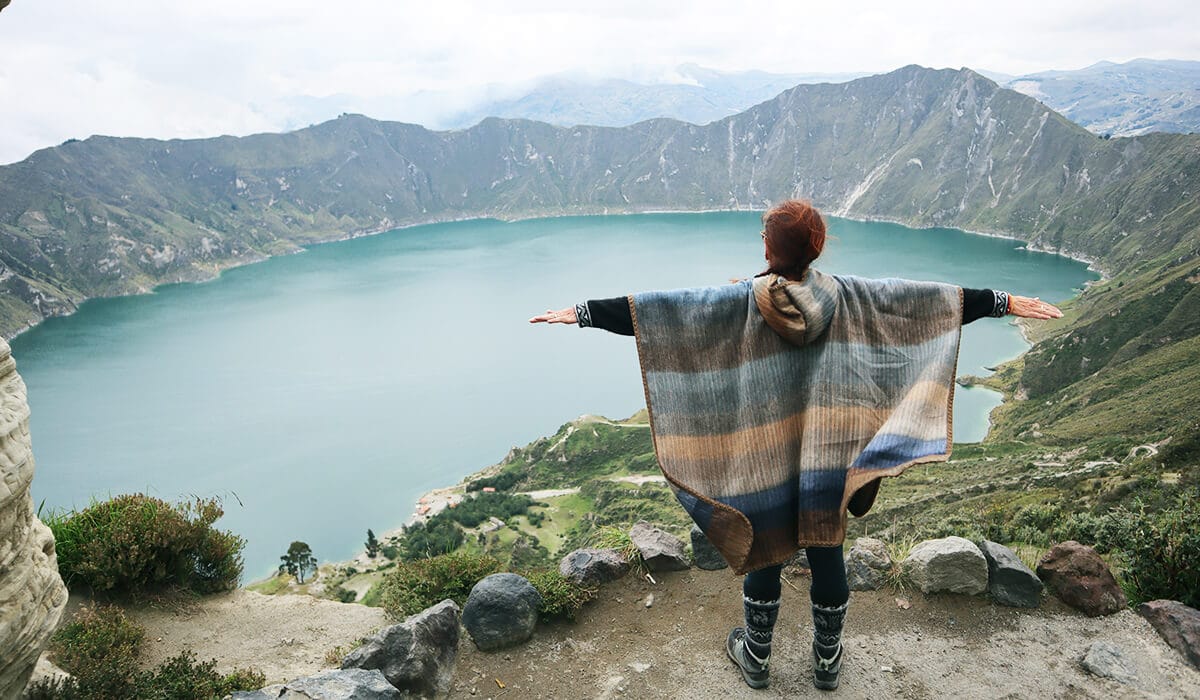
Whether you decide to stay for one week or 3 months, remember you can stay in Ecuador without a visa for a period of 90 days.
If you want to extend your stay beyond this period, you have to go the Ecuador Interior Ministry (there are offices in Quito, Guayaquil, and Manta) to apply for a visa. Manta might be the best option since the office is much less busy. The process costs from $150 to $400, depending on the kind of visa you apply for.
Must-sees in this country
- Coast: On the Spondylus route you can head to some beautiful spots such as Esmeraldas, Canoa, Ayampe, Montañita (the surf mecca), and Salinas. Puerto López is the jumping off point for boat trips to watch humpback whales (June – October) and the gateway for the Machalilla National Park.
- Guayaquil, one of the biggest cities in Ecuador, has some sights that are worth a visit, including the Las Peñas neighborhood, the Malecon 2000, and Parque Seminario (aka Iguana Park).
- Sierra: Quito’s Old Town is wonderful, with its astonishing colonial architecture, its traditions, and rich history. La Mitad del Mundo (the Middle Of The World) and the indigenous market in Otavalo are also highlights. Trekking the Quilotoa Loop and the Cotopaxi Volcano will test your lungs! From Riobamba you can take a train journey through the Avenue of the Volcanoes or on the famous Nariz del Diablo (Devil’s Nose) railway. Other visitor favorites include Baños, the beautiful colonial city of Cuenca, El Cajas National Park, and Vilcabamba.
- Jungle: Don’t miss Yasuní National Park, Cuyabeno Wildlife Reserve, Tena, Puerto Misahuallí, and Puyo (from where you can take a canoe or a small plane and visit some indigenous communities). The caves Cueva de los Tayos and Jumandi are great destinations for adventurers who are willing to prove their swimming skills!
- Galápagos Islands: The name speaks for itself! Check out the Charles Darwin Research Station, the white sands of Tortuga Bay, Kicker Rock (also known as the “León Dormido” or “Sleeping Lion” for its shape), and Gardner Bay. Galápagos is an expensive trip, yes! But these islands are a once-in-a-lifetime experience!
How to move around Ecuador?
You will have several options to choose from, here you will find some tips for traveling by taxi, bus, vehicle rental, or plane.
VEHICLE RENTAL
You can rent a car in main cities such as Quito, Guayaquil, and Cuenca by presenting a passport, a driver’s license, and a credit card. Prices vary from $15,00 per day to $550,00 per week, depending on the kind of vehicle you’re looking for.
TAXIS
Short taxi journeys are often $1,50 – 2,00. In larger cities, drivers are supposed to use a meter, so insist that your taxi does that or negotiate the fare in advance.
Hiring a taxi by the day – which is highly recommended for longer trips – could cost anywhere between $50 and $100. Some drivers are friendly and knowledgeable local guides!
BUS
Love it or not! Bus is the most common and economical mode of transport, with journeys costing $1,00 – 1,50 per hour.
Traveling by day lets you enjoy some beautiful views and the rapid changes in landscape – and you get some wonderful glimpses into everyday life as you pass by!
Larger towns usually have a main bus terminal. Adding to the flexibility of travel within Ecuador, many buses can be hailed from the roadside with a flap of the hand and will let you off upon request.
Even better, WANDERBUS offers you the opportunity to choose the Ecuador travel itinerary that suits you the best. Just click here to check our routes and decide the dates, we do the rest!
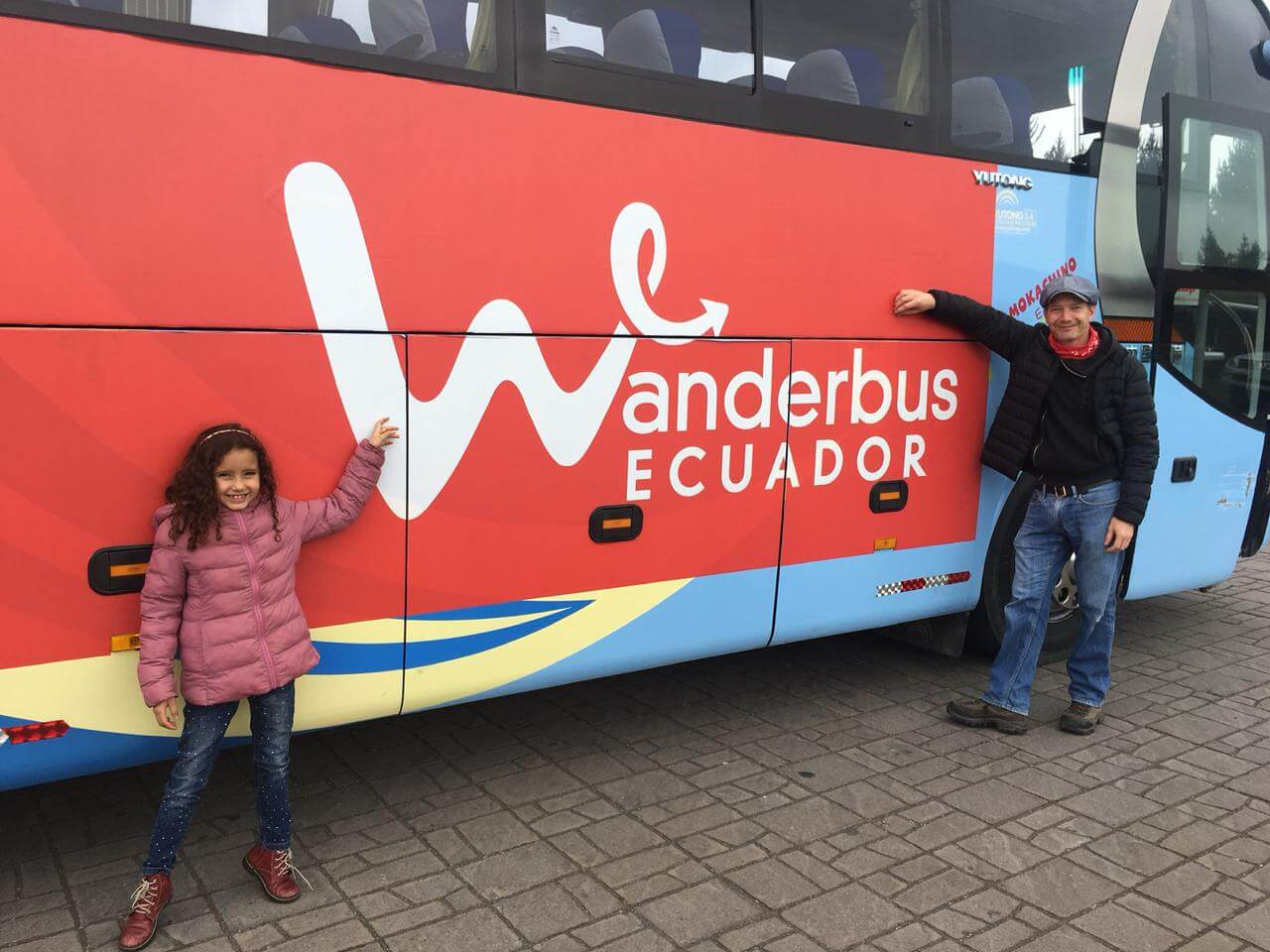
FLIGHTS
From Quito and Guayaquil, it’s possible to fly in under an hour to the main Ecuadorian cities. Flying to the Galápagos is expensive and takes a little longer but mainland flights are generally cheaper, don’t forget to check for deals with domestic airlines.
Ecuador is waiting for you, it’s time to get on board!
